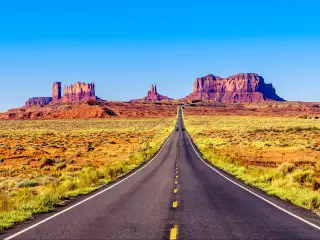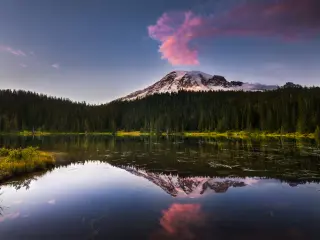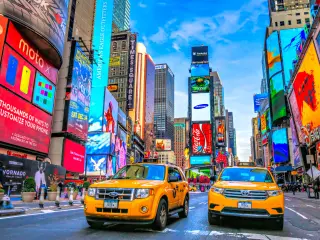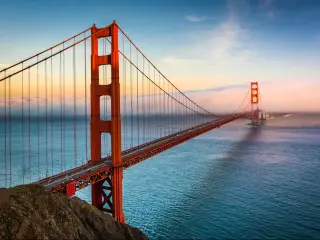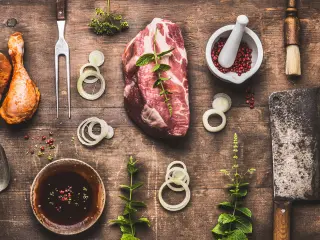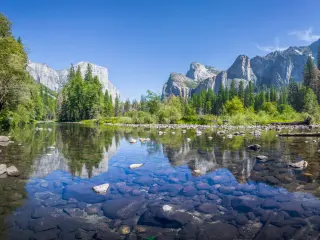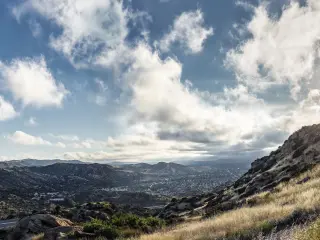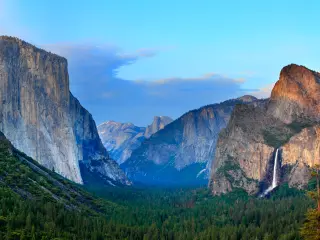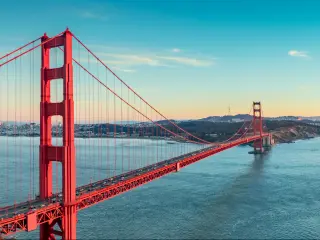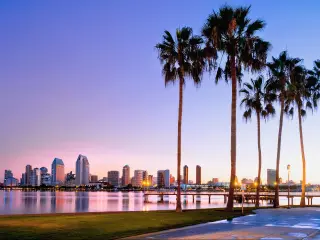Superbloom! The best places to see California's iconic wildflowers in 2024
For a few months each year, the rolling golden hills of California flush a vibrant green. In between all the grasses, you'll find patches of bright orange poppies, purple lupines, and yellow buttercups. While the wildflowers appear in modest numbers every year, occasionally the state becomes a kaleidoscope of colors during what's known as a “superbloom.”
In our list of the 12 best places to see California's iconic wildflowers during a superbloom we've included Mojave hotspots carpeted with poppies, coastal bluffs brimming with bright yellow mustard, and hidden blossoms high in the Sierra.
What makes a superbloom?
In the typically arid interior regions of California, when a series of winter rains combine with the right temperatures, millions of wildflower seeds awake from an extended slumber.
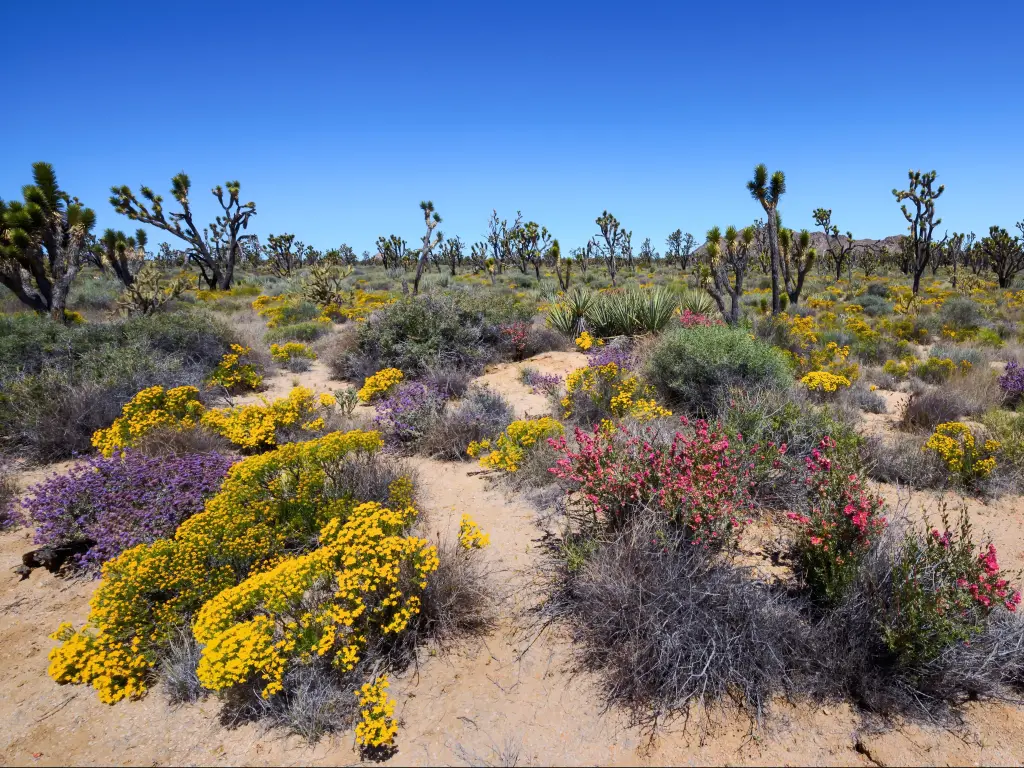
Especially in the southern deserts, the landscape is completely transformed for a few weeks between late February and May as the seeds erupt through the soft earth and carpet the land with swathes of lemon, amber, violet, and crimson.
Even though the deserts in the south are more famous for producing superblooms, hills throughout the state can erupt in a mosaic of color in the spring.
Read on below to find out which places in California are the best for viewing wildflowers, when you're most likely to see them, and the best way to get there.
| Route | Distance | Superbloom location | Best time to visit |
|---|---|---|---|
| Los Angeles to Joshua Tree National Park 2 hours 10 minutes | 130 miles | Joshua Tree National Park | February to March |
| Los Angeles to San Diego 2 hours 20 minutes | 140 miles | Lake Elsinore | February to April |
| Sacramento to Lassen Volcanic National Park 3 hours 10 minutes | 180 miles | Lassen Volcanic National Park | May to July |
| San Diego to Palm Springs 3 hours 45 minutes | 180 miles | Coyote Canyon in Anza-Borrego Desert State Park | Late February to March |
| San Francisco to Yosemite 5 hours | 200 miles | Briones, Mt. Diablo, Yosemite | Late February to mid-April |
| San Diego to Santa Barbara 4 hours | 235 miles | Point Mugu State Park, Malibu Creek State Park, Channel Islands National Park | March |
| Santa Barbara to Idyllwild 5 hours | 245 miles | Idyllwild Nature Center of Mount San Jacinto State Park | May |
| Las Vegas to Los Angeles and Palos Verdes Peninsula 4 hours 50 minutes | 300 miles | Palos Verdes Nature Preserve | March to April |
| San Jose to Los Angeles [td-subtext]6 hours 30 minutes | 380 miles | Point Dume | Mid-March to mid-April |
| Phoenix to Los Angeles 6 hours 10 minutes | 385 miles | Chino Hills State Park | Early March to May |
| Sacramento to Los Angeles 6 hours 45 minutes | 420 miles | Antelope Valley California Poppy State Natural Reserve | Mid-February to May |
| San Francisco to Death Valley National Park 7 hours 15 minutes | 470 miles | Death Valley National Park | February to April |
Keep in mind that Pacific Coast Highway can experience road closures, especially in the Big Sur area, so always check the official Caltrans website before setting off, to avoid disappointment.
1. Los Angeles to Joshua Tree National Park
2 hours 10 minutes (130 miles)
Why you should take this trip: Head out to the desert to catch one of California's most hauntingly beautiful national parks in full bloom. This road trip from LA to Joshua Tree has it all!
The ultimate wildflower location: Joshua Tree National Park
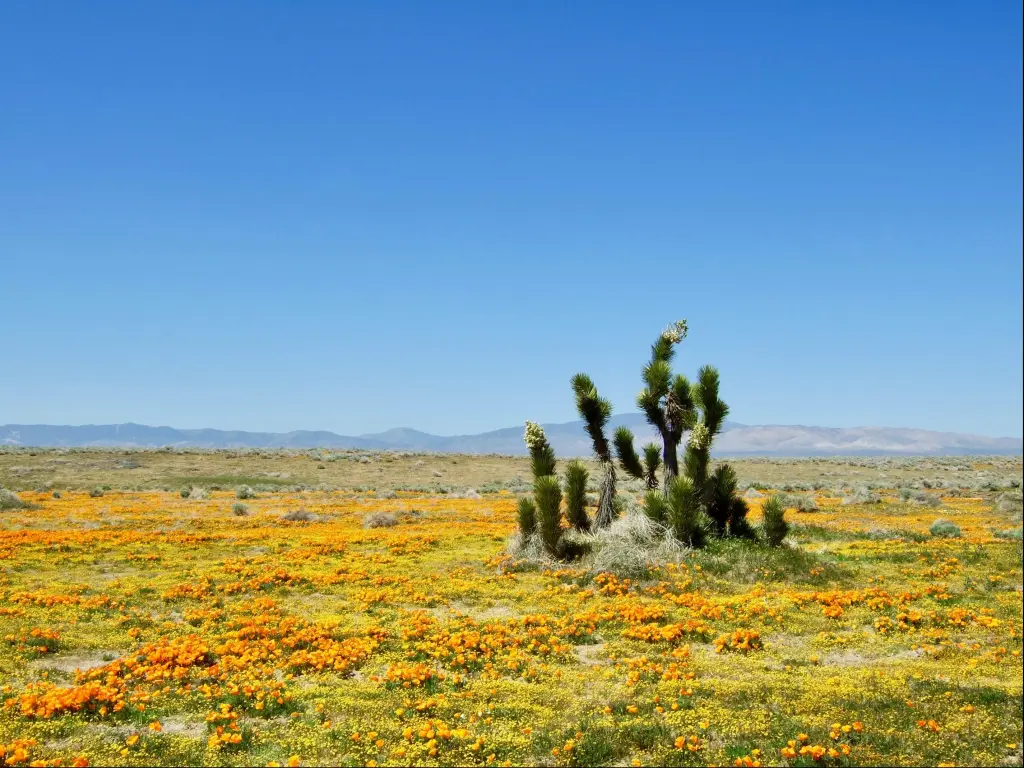
What kind of flowers will you see on this trip:
- Poppies
- Indian paintbrushes
- Pincushions
- Arizona lupine
- Desert gold
- Desert Canterbury bells
- Desert dandelion
- Cholla cactus
- Desert globemallow
How to get there: Start driving on Interstate 10 East, then head through Riverside via Interstates 15 and 215 East. Once there, link up with Interstate 10 East towards Palm Springs. Finally, take CA Route 62 north towards Morongo Valley and the Joshua Tree National Park entrance.
Our highlights: Being a national park, there are many well-maintained trails that run throughout Joshua Tree.
The Split Rock Loop takes you out to the Jumbo Rocks, a popular and often photographed region in the park. In the spring, these looming boulders are surrounded by desert paintbrush and California indigo bush among other wildflowers.
The Cholla Cactus Garden is one of the most popular spots in Joshua Tree any time of the year, but in April and May it becomes an even more must-see attraction. Many of these spiny cacti and adjacent wildflowers erupt in a stunning array of colors.
One of our favorites, visible later in the season, is the bright magenta blooms of the hedgehog cactus.
Fewer visitors from within California enter the park from the Southern Entrance near the Cottonwood Campground, off Interstate 10, but this is one of the best places to see wildflowers in the entire park.
In addition to being able to camp overnight here, there are towering purple lupines, golden poppies, and happy yellow brittlebush blossoms along the Bajada Trail.
Local gems: Joshua Tree, or J-Tree as it's known locally, has long been a magnate for creatives seeking desert inspiration. An architectural wonder that literally reflects the glory of this unique landscape is the “invisible house.”
Built on a 90-acre property adjacent to the national park, this long, mirrored building functions as a filming location and luxury vacation rental.
Our travel tips: If you want to watch one of those famous sunrises over the Cholla Cactus Garden in the park then plan on leaving Los Angeles early- really early – around 3am. Alternatively, plan on camping in the park or staying in nearby Palm Springs to wake up closer to a magnificent dawn experience.
To lean more about wildflower viewing at Joshua Tree National Park, you can visit the official NPS website.
When is the best time to visit: The best time to visit Joshua Tree National Park for wildflower viewing is from February to March.
The timing of the bloom differs for higher elevations. Areas between 3,000 and 5,000 feet above sea level will experience blooms from early March to May and on trails above 5,000 feet you can see beautiful bursts of color as late as June.
If you are visiting Joshua Tree National Park in May, make sure to check out Joshua Tree Music Festival.
READ MORE - Road trip from Los Angeles to Joshua Tree National Park
2. Los Angeles to San Diego
Via Lake Elsinore
2 hours 20 minutes (140 miles)
Why you should take this trip: This short but rewarding trip takes you between two of the largest cities in California and past one of the most photogenic superblooms in the entire state.
The ultimate wildflower location: Lake Elsinore
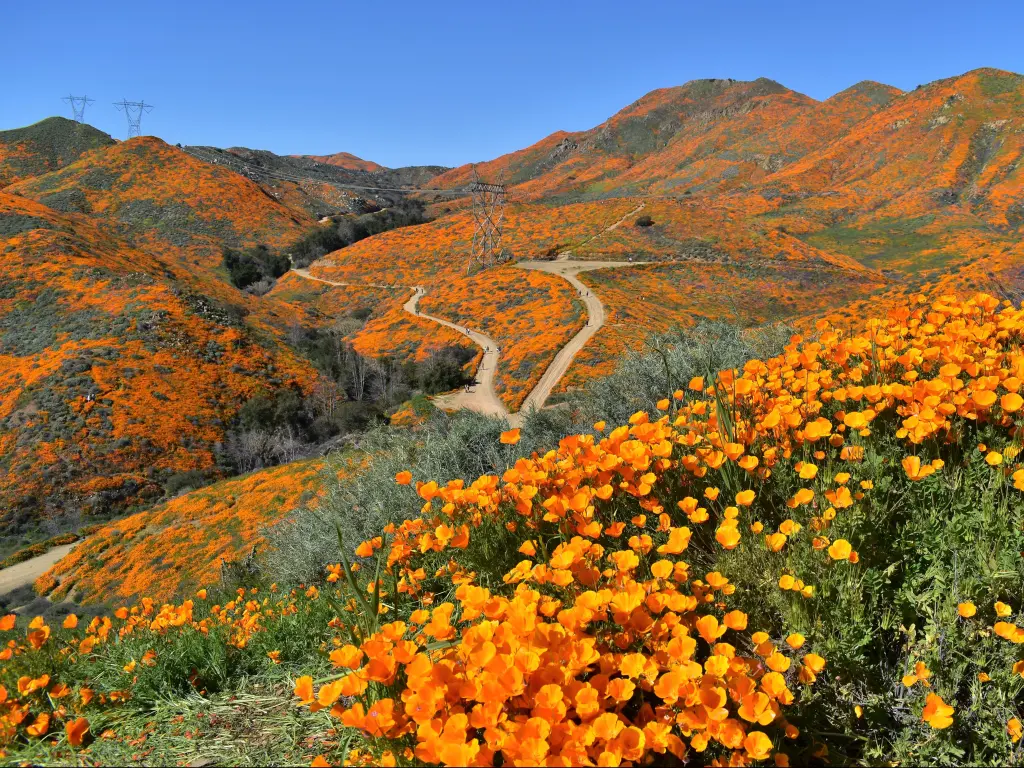
What kind of flowers will you see on this trip:
- California poppy
- Coulter's matilija poppy
- Dipterostemon
- Wishbone bush
- San Bernardino spine flower
- Heliotrope
- San Diego jewel flowers
How to get there: From Los Angeles, head towards San Bernardino on Interstate 10 East then navigate via CA Route 71 South to Interstate 15 (I-15) South. This leads all the way to Lake Elsinore. To get to San Diego, continue driving south on I-15 South for 75 miles.
Our highlights: Walker Canyon near Lake Elsinore is where all those unbelievable pictures came from of hills blanketed in bright saffron-colored poppies with hints of purple dipterostemon in between.
The unprecedented superbloom of 2019 put this remote canyon on the California wildflower viewing map.
For more extensive hiking and biking trails drive to Lake Mathews Estelle Mountain Reserve just north of Lake Elsinore. The dusty, rocky hills surrounding the reservoir are stunning in the early spring after being brought to life by the rains. There's not much shade here, so aim to hike in the morning or later afternoon.
Once you get to San Diego you can continue your wildflower watching at Torrey Pines State Natural Reserve. Here you'll be able to see coastal blossoms like the wild heliotrope, sea dahlia, San Diego jewel flower, and an Oceanside version of the ubiquitous Californian poppy, all wile admiring breathtaking views of the Pacific Ocean.
Local gems: In case you happen to like trains as well as wildflowers, can visit the Southern California Railway Museum in Perris, CA, just a few miles east of Elsinore. It's free to simply wander around their extensive collection and on the weekends they sell tickets for rides on a few of the classic locomotives.
Our travel tips: We'll say this here, but it applies to all the trips on this list: please respect the wildflowers and refrain from picking them, as hard as that can be! When the flowers are left intact in their natural environment, they provide food, shelter, and seeds for future blooms.
Walker Canyon is along Interstate 15. Due to overcrowding in previous years, the town started operating a shuttle. Check current conditions to make sure you can reach the trailhead.
When is the best time to visit: In Lake Elsinore the best time to see the poppies is from February until April. In years when the rains come late, you can even catch some wildflowers as late as May. The peak is likely to occur earlier in the season in February or March.
In San Diego, the wildflowers are also popping out from early March to May.
READ MORE - Road trip from Los Angeles to San Diego
3. Sacramento to Lassen Volcanic National Park
3 hours 10 minutes (180 miles)
Why you should take this trip: Most California wildflower viewing itineraries focus on Southern California, but you really shouldn't miss out on the state's northern charms.
Lassen Volcanic Park is already filled with gorgeous mountain trails and geothermal wonders, so the late spring bloom is like icing on the cake.
The ultimate wildflower location: Lassen Volcanic National Park
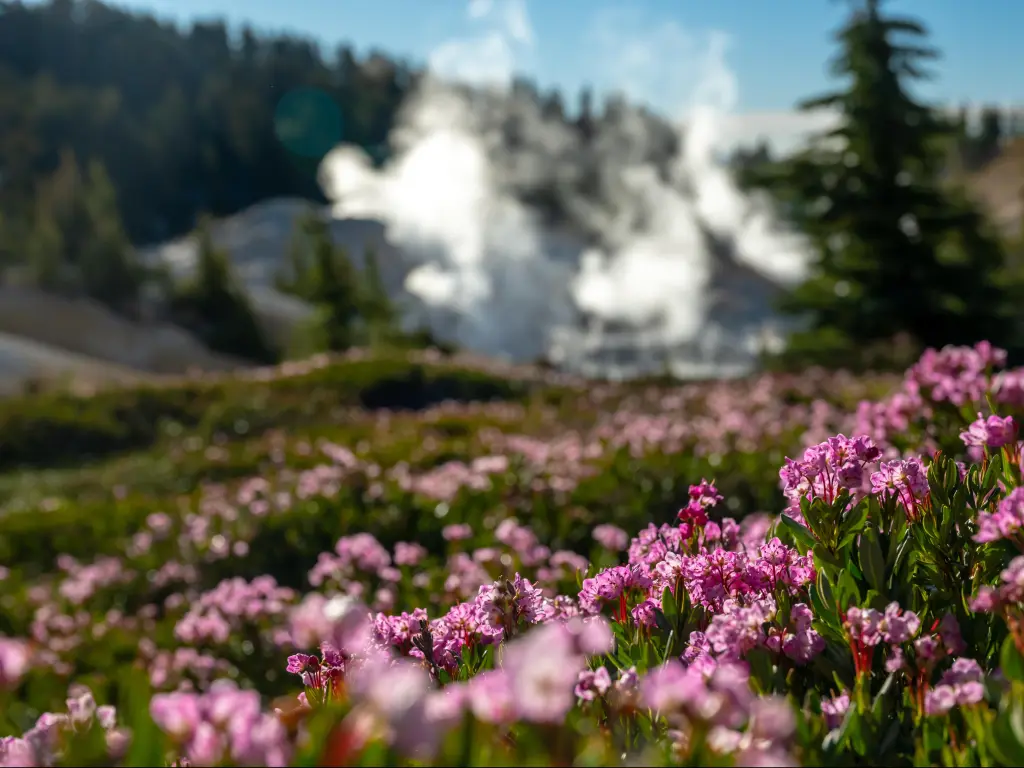
What kind of flowers will you see on this trip:
- Mountain mules ear
- Snow plant
- Western wallflower
- California corn lily
- Leopard lily
- Sierra bog orchid
- Silverleaf lupine
- Alpine shooting star
How to get there: From Sacramento take CA Route 99 North, through Chico, to Red Bluff then hop on CA Route 36 North and take this to Lassen Volcanic National Park's entrance in Mineral.
Our highlights: One of the park's more challenging hikes up Brokeoff Mountain involves a strenuous 7.4-mile trek out and back. Whether you're up for the whole hike or not, the first half mile of the trail is filled with stunning wildflowers and is not to be missed. The trailhead is just off Highway 89 within the park.
Filled with burbling streams and meadows, the King's Creek Trail is another gem in Lassen that will surely please any hiker who is on the hunt for flowers. This trailhead is also off Highway 89, past the parking for Bumpass Hell and King's Creek picnic area.
Camping in Lassen is the best way to experience its grandeur and variety of landscapes and trails. There are three campgrounds grouped around Summit Lake, further along Highway 89. Numerous trails loop in and out around the lake, all bursting with colors and life in the late spring and early summer.
Local gems: This park has dozens of hidden geothermal features, be sure to catch at least one during your trip. The most popular feature is the Bumpass Hell hike through the highest concentration of steaming pools and vents in the park. Another option is the Terminal Geyser Trail which leads for about three miles to a large steam vent.
Our travel tips: We've outlined a slightly more scenic route above with optional lunch or sightseeing stops in Yuba City, Oroville, and Chico. For a more straightforward, but only slightly shorter route, you can take Interstate 5 North for most of the journey.
Given the altitude of Lassen Volcanic National Park, many features might not be accessible until June.
When is the best time to visit: In the lower elevations of the park, you can see wildflowers from late May through July.
Near the high-altitude Summit Lake, Juniper Lake, and Lassen Peak the main bloom happens later, from late June all the way up to September.
So just in case you can't make a “spring” trip until later in the year, Lassen Volcanic National Park is a wonderful option that doesn't get anywhere near as crowded as Yosemite.
4. San Diego to Palm Springs
Via Anza-Borrego Desert State Park
3 hours 45 minutes (180 miles)
Why you should take this trip: Anyone who has been lucky enough to spend some time in the desert, knows the peace that the uncanny desert beauty bestows. This trip is a chance to see the desert in a whole new light, come alive with wildflowers.
The ultimate wildflower location: Coyote Canyon in Anza-Borrego Desert State Park
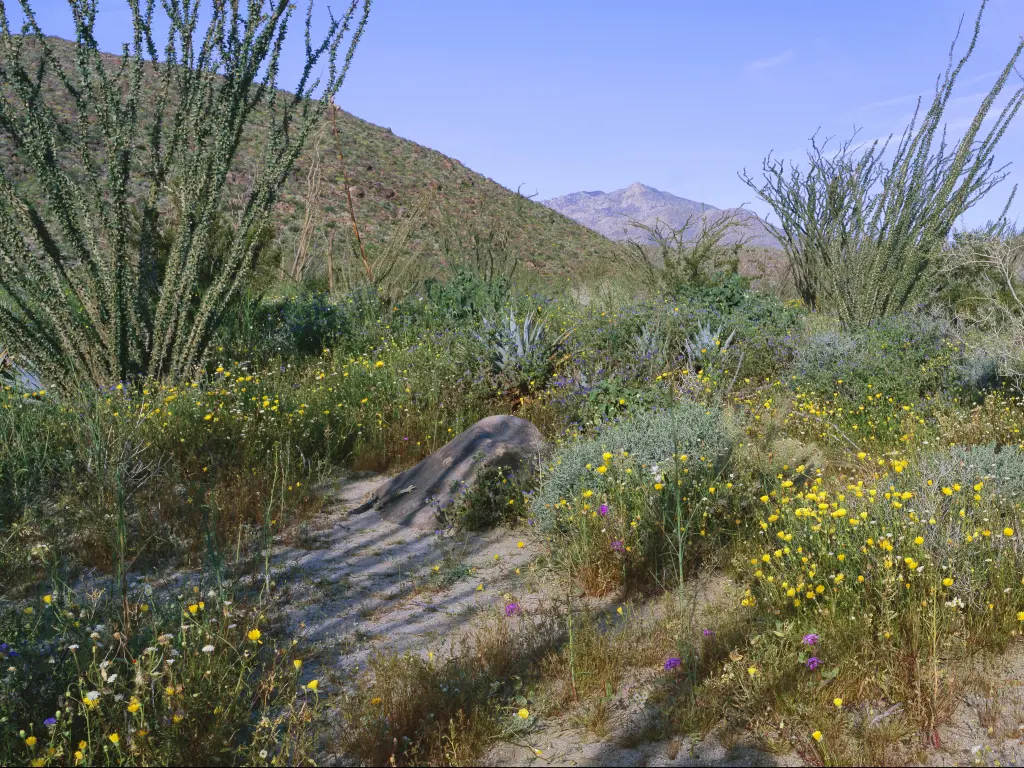
What kind of flowers will you see on this trip:
- Lupines
- Poppies
- Sand verbena
- Phacelia
- Fiddleneck
- Penstemons
- Blazing stars
- Desert lilies
- Dune evening primroses
How to get there: Take CA Route 163 North and link up with CA Route 67 after Poway. In Ramona this merges with CA Route 78, continue following this east until you reach Ysabel, then take CA Route 79 North. Take the exit for San Felipe and Borrego Springs.
After some time in Anza-Borrego State Park, take Borrego Salton Sea Road to Salton City. From there, head north on CA Route 86, before finally navigating to Interstate 10 North to Palm Springs.
Our highlights: The prime place to see desert blossoms in Anza-Borrego State Park is the Coyote Canyon Wildflower Viewing Area. Peppered throughout this arid, yet serene, landscape bordered by bare mountains are hardy wildflowers of every hue.
We found the bright white dune evening primroses to be particularly charming here.
If you want to make this into a longer trip with multiple stops, consider spending a night or two at the Palm Canyon Oasis campground in Anza-Borrego State Park.
In addition to an array of yellow, purple, and white wildflowers poking up from the parched desert floor, there's also a sizable bighorn sheep population here and sightings are common.
In between spa treatments in Palm Springs, take some time to venture the many trails and admire the spring wildflowers that surround this desert town. Just to the south, try the Andreas Canyon trail in Murray Canyon which briefly becomes a verdant paradise after the winter rains.
Local gems: In case you'd like to see even more flowers and learn about how they survive in the unforgiving desert ecosystem, spend some time at the rustic Moorten Botanical Gardens in Palm Springs. Their cactus and succulent gardens really stand out.
Our travel tips: Given its proximity to both Los Angeles and San Diego, Palm Springs can get crowded, and hotel prices competitive, on the weekends. Try to make this a mid-week trip if you can.
Anza-Borrego State Park is still not on many people's wildflower radar, so a huge benefit of spending time here is the chance to enjoy some real solitude in the desert.
When is the best time to visit: Late February and March are usually the best months to catch the blossoms in Anza-Borrego State Park. During a wetter year, there's great wildflower viewing here until April.
Similarly for Palm Springs, the wildflowers will typically bloom from March to May.
READ MORE - Road trip from San Diego to Palm Springs
5. San Francisco to Yosemite
Via Briones Regional Park and Mount Diablo State Park
5 hours (200 miles)
Why you should take this trip: See some hidden botanical gems of the East Bay Area as you venture from San Francisco to Yosemite, California's most iconic National Park in the Sierras and home to over 1,400 native plant species.
The ultimate wildflower locations: Briones, Mt. Diablo, and Yosemite
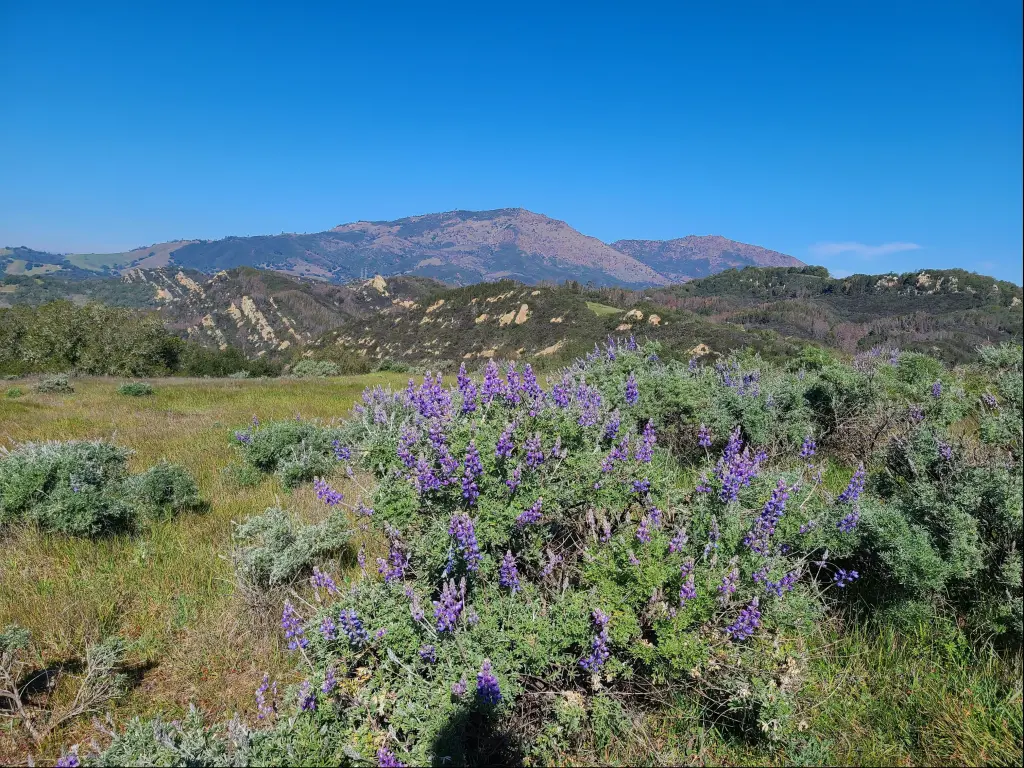
What kind of flowers will you see on this trip:
- Mariposa lilies
- Miner's lettuce
- Poppies
- California saxifrage
- Woodland star
- Fiddlenecks
- Buttercups
- Larkspur
- Baby blue eyes
- Silver lupine
- Winter vetch
- Monkeyflowers
- Tufted poppies
- Spider lupines
- Shooting stars
How to get there: From San Francisco take Interstate 80 East across the Bay Bridge then merge onto CA Route 24 East to Lafayette and Briones Regional Park.
After exploring this park, take CA-24 to Northgate Road via Ygnacio Valley Rd in Walnut Creek. Here you can explore the foothills of Mt. Diablo or drive all the way to the summit.
From Mt. Diablo, navigate to Interstate 580 East via Interstate 680 South. Drive through Tracy on Interstate 205, then exit onto California Route 120 East in Manteca which you'll take all the way to the Big Oak Flat Entrance to Yosemite.
Our highlights: Briones Regional Park is a surprising refuge of wild canyons and hills nestled on the eastern edge of the bustling San Francisco Bay Area.
In the spring the usually dry hills flush a bright clover green and are dotted with all kinds of wildflowers. There are many shaded creeks and ravines in the park where you can see less common species of wildflowers.
Mt. Diablo is a sloping, lone peak a little to the east of Briones. There's a road leading from the town of Walnut Creek all the way to the summit. One of the most popular, and fun, areas of the park is Rock City, but for wildflower viewing the trails in the foothills accessible via Northgate Road are some of your best options.
Once you get to Yosemite it might be difficult to decide where to go for the best wildflower viewing. After doing the Yosemite Valley Loop trail and taking in the grandeur of its granite monoliths, drive to the Cook's Meadow Loop or Wawona Meadow Loop to walk through some of the densest areas of wildflower blooms in the whole park.
If you want to enjoy the bright bursts of color in the Sierra foothills, but are wary of crowds or prices in Yosemite, then head to CA-140 along the Merced River Canyon and look out for the Hite Cove Trail.
In the spring the hills on either side of this steep ravine trail are bursting with color and life, all set against a stunning Sierra backdrop.
Local gems: The road all the way up to the peak of Mt. Diablo might be a bit daunting for some drivers. A great alternative for wildflower viewing is Las Trampas Wilderness, across Interstate 680 from Mt. Diablo. Access to trailheads can be found at Hemme Avenue in Alamo and Bollinger Canyon Road in San Ramon.
If you make the steep hike up to the ridge, in addition to the many beautiful poppies and lupines you'll see along the way, you'll be rewarded with a grand view of Mt. Diablo on the other side of the valley.
Our travel tips: Coming from San Francisco the most convenient place to enter the sprawling Briones Regional Park is via the town of Lafayette on the southern edge of the park.
On the website for Briones Regional Park there is an excellent guide to all the wildflowers you can see there with pictures helpfully arranged according to color. There's also an online guide to wildflowers on Mt. Diablo Interpretive Association's website.
Yosemite can experience snowy conditions through the early spring, so if you're planning a trip in early March, check to make sure the area of the park you wish to visit is open.
When is the best time to visit: In Briones and on Mt. Diablo the wildflower season if fleeting and best viewed from late February to mid-April.
Because of the high variation in elevation and biodiversity in Yosemite, this is a place you could come a bit later for wildflower viewing. In the high Sierra passes where the snow melts later, you can catch fresh wildflower blooms as late as August.
In the meadows and lower elevations, late March to May is the best time to catch wildflowers.
READ MORE - Road trip from San Francisco to Yosemite
6. San Diego to Santa Barbara
Via Point Mugu State Park and Malibu Creek State Park
4 hours (235 miles)
Why you should take this trip:This is a trip for the intrepid wildflower aficionado. In addition to stops in two state parks in the Santa Monica Mountains, you'll have a chance to finish the last leg of your trip by boat exploring California's version of the Galapagos Islands.
The ultimate wildflower locations: Point Mugu State Park, Malibu Creek State Park, and the Channel Islands National Park
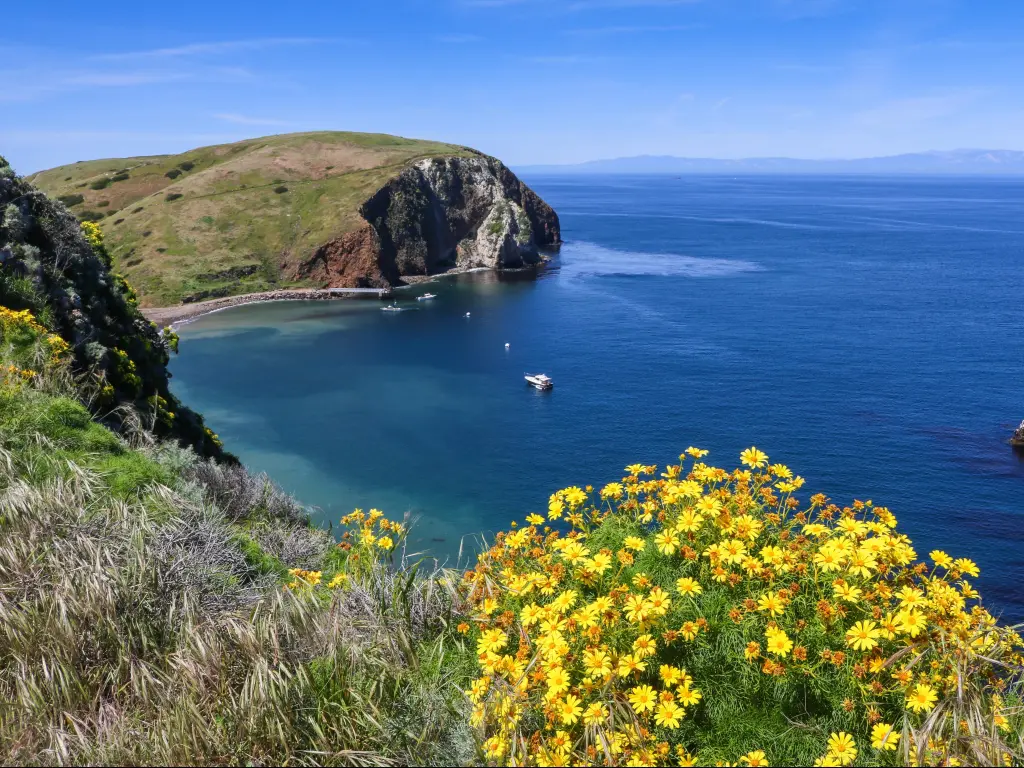
What kind of flowers will you see on this trip:
- Giant coreopsis
- Poppies
- Lupines
- Paintbrush
- Gilia
- Morning glories
- Canyon sunflower
- Dipterostemon
- Tree sunflowers
- Red buckwheat
How to get there: Start heading north on Interstate 5 then change onto US Route 101 in Glendale. Stay on that for a few miles until you take a left onto Las Virgenes Road, which will take you past Malibu Creek State Park.
After spending some time there, drive to CA Route 1 on the coast via Malibu Canyon Road. Drive north to Point Mugu State Park, then continue driving north on CA-1/US-101 for another 50 or so miles to reach Santa Barbara.
Our highlights: Malibu Creek State Park is like an oasis just on the other side of the hills from busy Los Angeles. Some trails lead to fascinating volcanic formations, like the Rockpool and Century Lake Trails, and others to a quiet pond surrounded by bright green hills and oak trees like the Malibu Lake Trail.
If you can make it here at any point during the spring you will be in awe of how gorgeous this state park is.
Over in Point Mugu State Park you'll find another veritable Eden on this earth in the La Jolla Valley Natural preserve. A short, but strenuous, hike up the Chumash Trail will take you to an open field with bursts of bright violet, orange, and yellow between the emerald grasses.
The Old Boney Loop also passes by hillsides occasionally carpeted with poppies.
As if Santa Barbara couldn't get any more beautiful! In the hills that usually serve as a backdrop to the beach you can find some amazing trails, many featuring spring wildflowers.
Hot Springs Canyon Trail is a local favorite which indeed leads to some tempting pools and Inspiration Point Trail equally lives up to its name.
Even though the Channel Islands are breathtaking and protected as one of California's nine national parks, sometimes people overlook them when planning a trip to Santa Barbara. Don't make this mistake, especially during wildflower season.
On these pristine, vehicle-free islands you can spot towering tree sunflowers, red buckwheat, paintbrush, white mallow, and captivating island gilia, which is a rare periwinkle bloom. There are surprising differences between each island, so if you fancy yourself a backyard botanist, try to visit more than one.
Our travel tips: Especially if there have been recent rains, be sure to bring some sturdy boots for the steep hike to La Jolla Valley in Point Mugu State Park
The Channel Islands are only reachable by a boat service called the Island Packers and you should absolutely reserve a ticket ahead of your planned journey. The Chanel Islands Visitor Center is located near Santa Barbara Harbor.
When is the best time to visit: Point Mugu State Park and Malibu Creek State Park both see the highest concentration of wildflower blossoms in March. But there are over 900 native species in the Santa Monica Mountains, so no matter when you visit, something will be in bloom.
The peak bloom around Santa Barbara is usually between March and Mid-April. The Channel Island blooms a bit earlier, usually peaking in late March.
READ MORE - Road trip from San Diego to Santa Barbara
7. Santa Barbara to Idyllwild
Via the Angeles National Forest
5 hours (245 miles)
Why you should take this trip: Drive from sunny Santa Barbara along one of the most underrated scenic drives in California to reach gorgeous Idyllwild and the San Jacinto Mountains in the prime of spring.
The ultimate wildflower locations: Idyllwild Nature Center, of Mount San Jacinto State Park
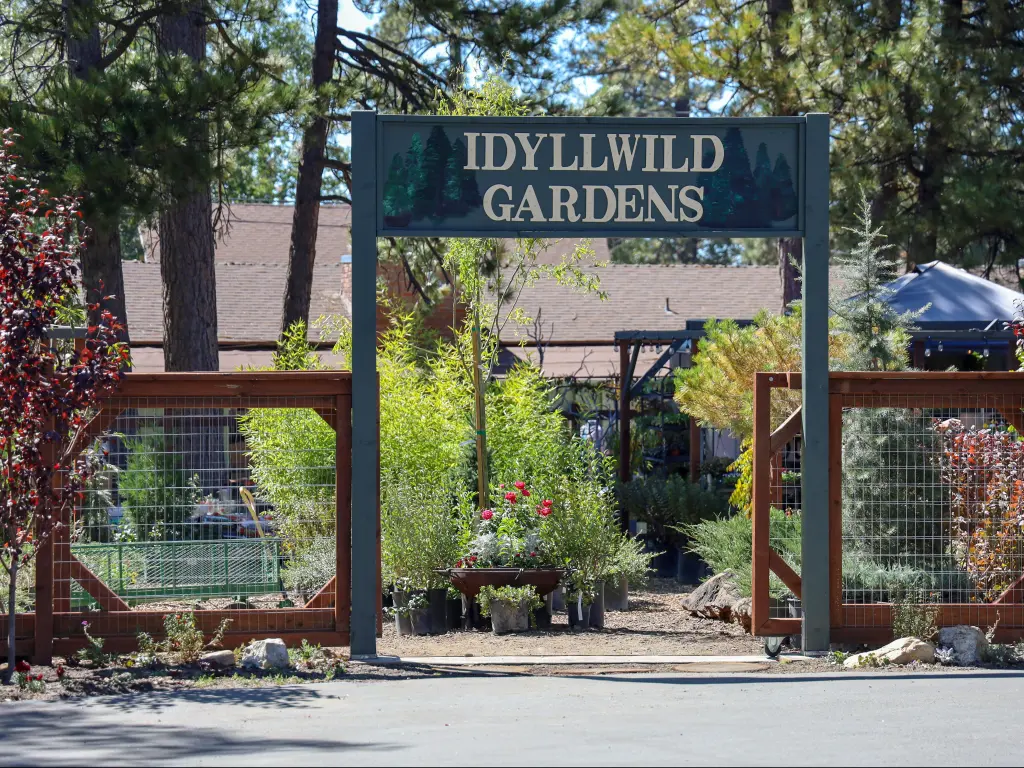
What kind of flowers will you see on this trip:
- Poppies
- Western azaleas
- Several varieties of lupine
- Alpine asters
- Lilies
- Penstemon
How to get there: From San Diego drive south along US Route 101, changer over to CA Route 134 East near Glendale. Head further inland towards Montrose, where you'll hop on CA Route 2 and traverse the San Gabriel Mountains, passing Angeles National Forest.
When CA 2 intersects CA Route 138, take it south to Interstates 215 and 10. Finally, take CA Route 243 South to Idyllwild.
Our highlights: To get oriented around this hiker's haven and see a fine selection of the areas charming perennials, first stop by the Idyllwild Nature Center.
Idyllwild is known as a playground for the most outdoorsy people in Southern California, so it should come as no surprise that there are more challenging trails here as well. The South Ridge Trail to Tahquitz Peak will have you catching your breath, only to lose it again when you look up at the stunning views from here.
The campgrounds of Mount San Jacinto State Park are also in Idyllwild. This alpine wilderness is a great place for backpacking and contains a few meadows where you can see less common high-altitude species.
Local gems: Hidden away amidst the winding roads of the San Jacinto Mountains is the Idyllwild Lilac Garden. This passion project boasting lilacs in dozens of different hues is open to the public on weekends in April and May.
Our travel tips: The route we've laid out goes over the scenic Angeles Crest Highway, also known as CA Route 2. This adds some time and mileage to the trip, but it is a gorgeous drive.
You can stay on Interstates 210 and 10 as you pass through Pasadena to save time. CA Route 2 has occasional closures, so check for these before you start your drive.
If you want to explore the backcountry of Mount San Jacinto State Park, you'll need a permit. Check the park website for the current fees and any updates about closures.
If you'd like to learn more about whether the drive to Idyllwild is scary, here is our detailed guide.
When is the best time to visit: Given the higher elevation of Idyllwild and nearby parks, this is a trip better for later in the spring, when things start to heat up in May. You won't see many flowers when snow is still on the ground, as it often is until March.
8. Las Vegas to Los Angeles and Palos Verdes Peninsula
4 hours 50 minutes (300 miles)
Why you should take this trip: Nestled in the southwestern corner of Los Angeles is a lesser-known peninsula so verdant that the Spanish named it Palos Verdes, or “Green Sticks.”
In between coastal mansions and golf courses there are some stunning land preserves where the wildflowers are center stage during the spring.
The ultimate wildflower locations: Palos Verdes Nature Preserve, Mojave National Preserve
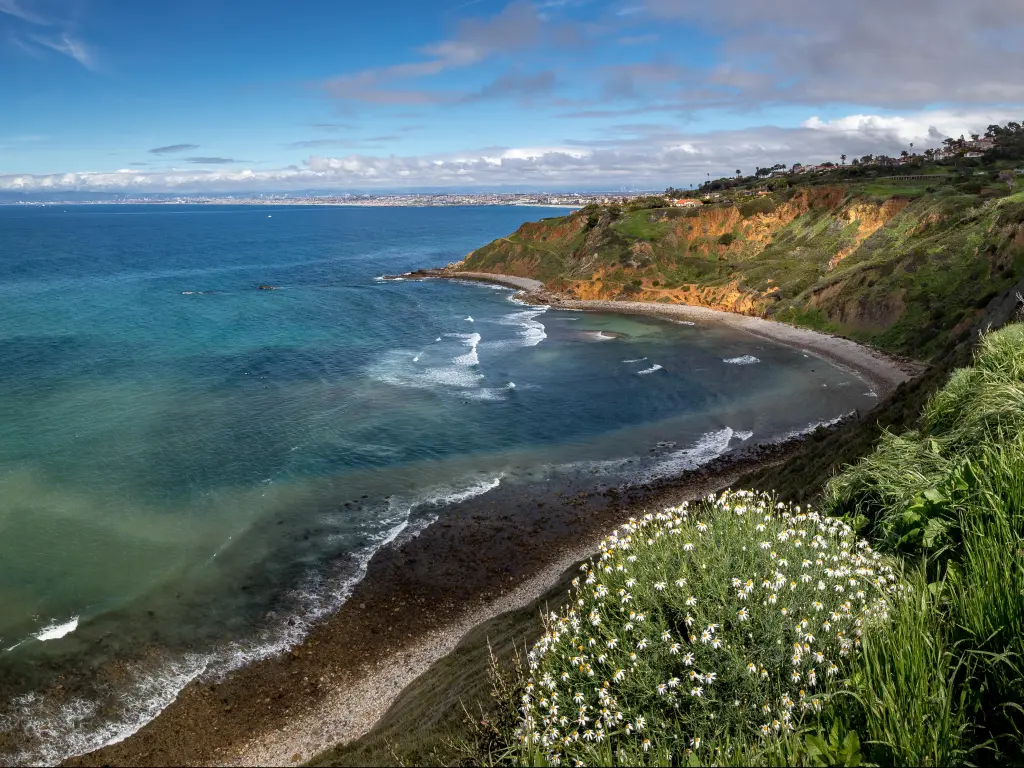
What kind of flowers will you see on this trip:
- Poppies
- Mariposa lily
- Fiddleneck
- Arroyo lupine
- Caterpillar phacelia
- California buckwheat
- California bush sunflower.
- Desert five-spot
- Desert paintbrush
- Desert mariposa lily
- Beaver-tail cactus blooms
How to get there: From Las Vegas take Interstate 15 South all the way to San Bernardino, then take CA Route 210 West to Los Angeles. Follow Interstate 110 South through Torrance to get to the Palos Verdes Peninsula, west of Long Beach.
Our highlights: Just as you cross over the California border, Mojave National Preserve might prove an ideal spot to stop and see some desert flowers if there have been enough rain in a given year. You can even see flowers from Cima Road and Morning Star Mine Road, both close to Interstate 15.
Palos Verdes stands in stark contrast to the concrete jungle of Los Angeles. In this beautiful and upscale neighborhood with ample cliffs overlooking the ocean, one of the best places to see a coastal superbloom is the Palos Verdes Nature Preserve.
Spread over 1,400 acres of rolling coastal hills, in addition to a multitude of blossoms, on a clear day you can see all the way out to Catalina Island. The Bluffs Trail was our favorite.
Los Angeles is home to much more than flowers and stars. During the last Ice Age this geographical region was lush, cool, and home to a myriad of extinct species like wooly mammoths.
At the La Brea Tar Pits and Museum, you can learn more about this area's deep paleontological history and see some of the 3.5 million fossils that have been recovered here.
Local gems: Not far from Rancho Palos Verdes, the Wayfarer's Chapel is a striking glass church designed by Frank Lloyd Wright. His signature angles seem especially abstract in this structure that blurs the boundary between indoor and outdoor space. Needless to say, the grounds and setting are equally beautiful and open to the public from 9 a.m. to 5 p.m. every day.
Our travel tips: If you plan on stopping by the Mojave National Preserve, check their website while you're planning your trip to get the latest updates on wildflower blooms and to check about any road closures.
When is the best time to visit: In the Mojave National Preserve March and April are your best bets for catching the desert in bloom.
On the Palos Verdes Peninsula flowers can be seen throughout the year due to the temperate climate, but most blossoms are out from March to May.
READ MORE - Road trip from Las Vegas to Los Angeles
9. San Jose to Los Angeles
Via Point Dume
6 hours 30 minutes (380 miles)
Why you should take this trip: Usually a trip to Los Angeles is all about glamour, shopping, and fun in the sun, but did you know that every spring the coastal wildflowers put on a show of their own along Pacific overlooks?
The ultimate wildflower location: Point Dume
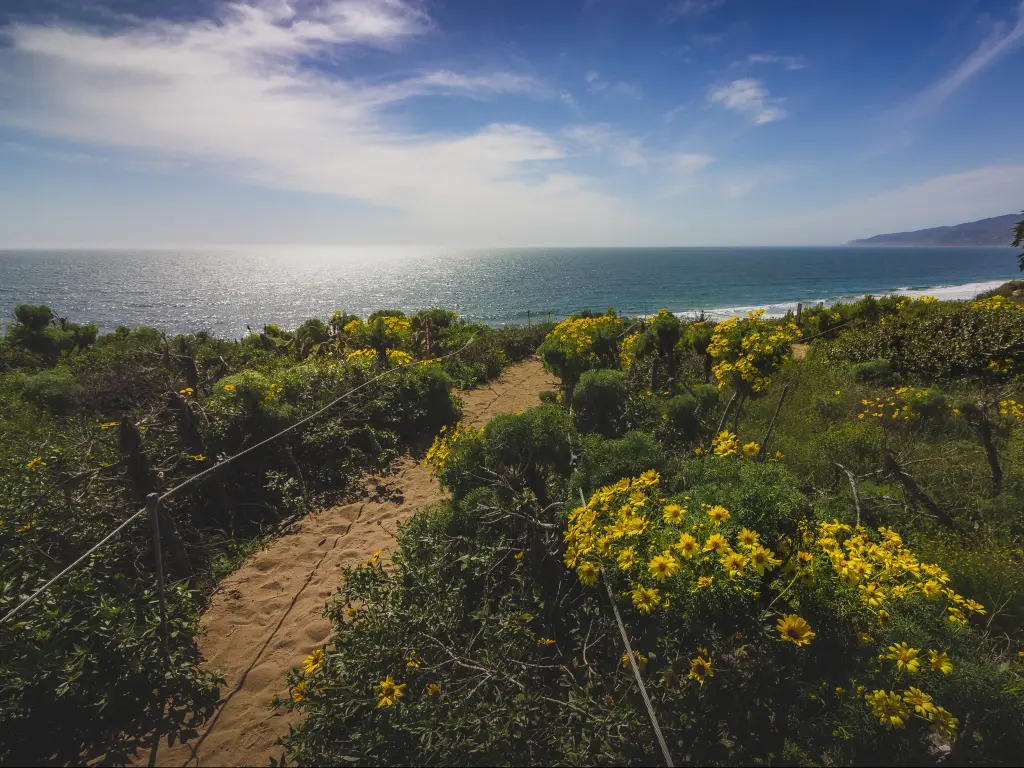
What kind of flowers will you see on this trip:
- Giant coreopsis
- Poppies
How to get there: From San Jose, take US Route 101 South for the majority of the journey until you get to Oxnard, where you'll change over to CA Route 1 (CA-1) South. Take this past Point Mugu State Park to Point Dume.
After being wowed by the display of flowers there, continue south on CA-1 past Malibu to Santa Monica. Take Interstate 10 East to get to downtown Los Angeles.
Our highlights: Few things could be more delightful than meandering through the waist-high, bright yellow blooms of Point Dume Natural Preserve.
In addition to innumerable giant coreopsis flowers, the two-mile loop trail through this preserve takes you to breathtaking viewpoints over the Pacific Ocean. There are also stairs down to the shore, if you'd like to get some beach time in as well on this trip.
Even before you get to Los Angeles, you'll have another chance to stretch your legs and marvel at the freshness of Spring in Southern California in the Santa Monica Mountains.
There are a series of parks and trails between Malibu and Santa Monica, look out for Topanga State Park which contains the Musch Trail to Eagle Rock, known to have a fair display of blossoms in March and April.
Along with the wildflowers covering the Californian hills, the cultivated beds of botanical gardens are also alight with color and fresh growth this time of the year.
At the edge of the sprawling UCLA campus, you'll find the Mildred E. Mathias Botanical Garden and a few relaxing hours here won't be spent in vain. It's also close to Beverly Hills and the Getty Museum, two of Los Angeles' top attractions.
Local gems: With Hollywood a stone's throw away, Point Dume and nearby Zuma Beach have been used as a filming location for several movies, most recently the Oscar-nominated “The Fablemans.”
If you go down to Westward Beach, walk a bit, and look back at the cliffs, you might also recognize them as the backdrop to the famous reveal in “Planet of the Apes” (1968).
Our travel tips: It's possible that the serenity induced by mounds of yellow flowers by the beach can be outweighed by the horrific traffic of Los Angeles. Avoid the morning and evening commute times, and try to make this trip during the middle of the week if you can.
In case you feel like seeing more of the coast on your way to Los Angeles, you could get on CA Route 1, also known as the Pacific Coast Highway, earlier in your journey around Monterrey. This would take you past Big Sur and San Luis Obispo County, two beautiful coastal locations in the spring, and add approximately two hours to the driving time.
When is the best time to visit: The peak bloom of the thousands of giant coreopsis flowers in Point Dume is from mid-March to mid-April.
READ MORE - Road trip from San Jose to Los Angeles
10. Phoenix to Los Angeles
Via Chino Hills State Park
6 hours 10 minutes (385 miles)
Why you should take this trip: Despite being so close to Los Angeles, not everyone knows about this little state park with blooms it could brag about. Spend some time hiking through these eye-catching hills then sightseeing in the cultural epicenter of Southern California.
The ultimate wildflower location: Chino Hills State Park
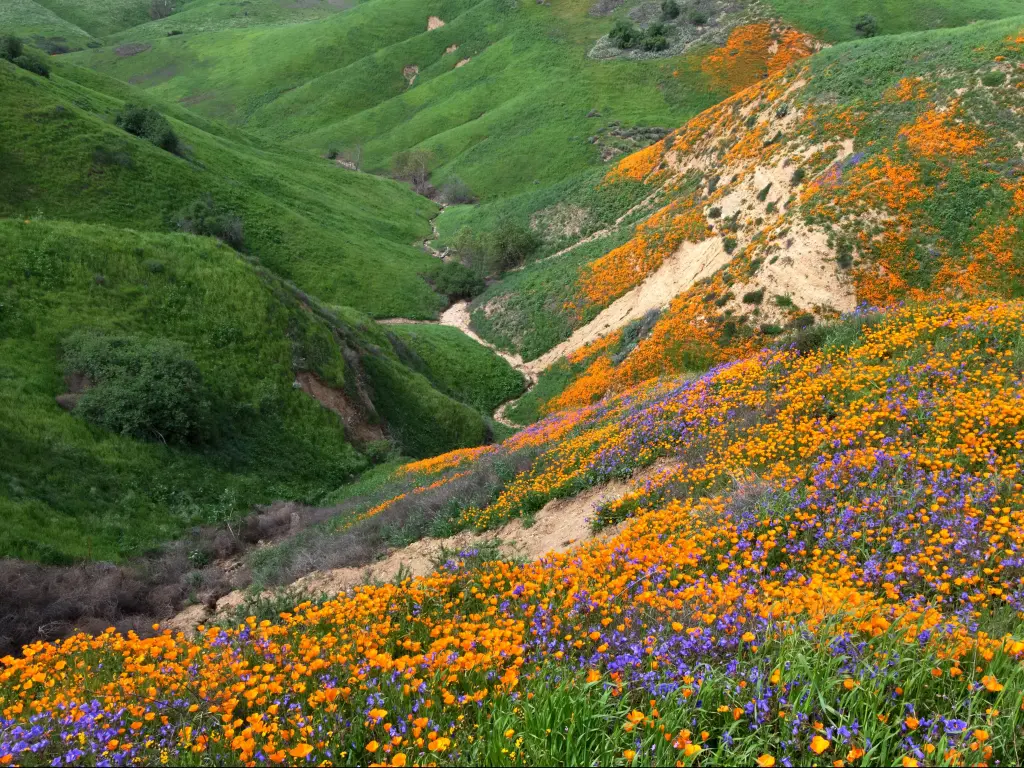
What kind of flowers will you see on this trip:
- Poppy
- Canterbury
- School bells
- Arroyo lupine
- Black mustard
How to get there: From Phoenix, start driving west on Interstate 10 (I-10) and stay on this for about 335 miles. As you approach Riverside, take CA Routes 60 and 91 West CA Route 71 North and the entrance to Chino Hills.
To get to Los Angeles from here, get back on CA Route 71 North and take it back to I-10, which will take you into the heart of Los Angeles.
Our highlights: Chino Hills State Park contains about 90 miles of trails crisscrossing over the rolling hills. Unless you're really up for hiking all of them, we'll let you know which ones are the best for seeing wildflowers.
Definitely start with the Bane Ridge Trail, which is just under 5 miles long and should be manageable for most people.
Another wonderful option is the Bane Canyon Loop Trail, which is slightly more challenging at 5.8 miles long. The payoff includes a breathtaking overlook where there are brightly colored hills dotted with oak trees as far as the eye can see.
In case you'd like to continue communing with nature once you reach Los Angeles, in between stints at Universal Studios and the Getty, the trails in Angeles National Forest are at their prime in the spring.
Big Santa Anita Canyon Trail, which leads to the seasonal Sturtevant Falls, contains tons of native Californian plants, many of which will be in bloom. The spring is also one of the best times to see this area when it actually has some water flowing through it.
Local gems: Balance the beauty of nature with the beauty of human imagination. One of the best up and coming galleries for contemporary art in Los Angeles is the Broad. The honeycomb-like exterior lets you know right away that you're about to step into something extraordinary.
Our travel tips: Being a state park, there are about 20 campsites in Chino Hills that you can reserve ahead of time. Few things are more magical than waking up to sunrise over rolling hills filled with flowers!
As always, be aware of Los Angeles' intense traffic. Try to arrive via I-10 between 11 a.m. and 3 p.m. or after 7 p.m. Chino Hills is also likely to be much more crowded on weekends.
When is the best time to visit: You can see the delightful blossoms in Chino Hills from early March through May. The wildflowers are out in their strongest numbers from late March to early April. Later in the season the hills are completely covered with bright yellow mustard blossoms.
READ MORE - Road trip from Phoenix to Los Angeles
11. Sacramento to Los Angeles
Via Antelope Valley California Poppy State Natural Reserve
6 hours 45 minutes (420 miles)
Why you should take this trip: Perched on the edge of the Mojave Desert ecosystem, in Antelope Valley you can see the full glory of the spring superbloom, including lots of California poppies!
The ultimate wildflower location: Antelope Valley California Poppy State Natural Reserve
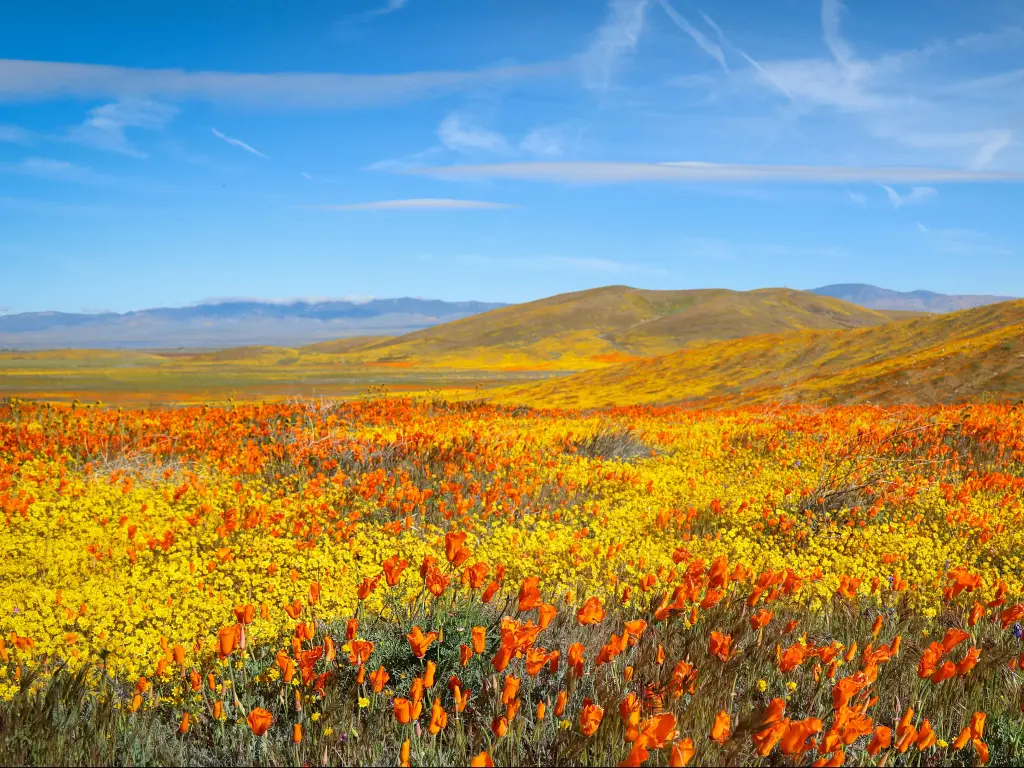
What kind of flowers will you see on this trip:
- California poppy
- Owl's clover
- Lupine
- Goldfield
- Cream cups
- Fiddlenecks
- Suncups
- Coreopsis
How to get there: From Sacramento hop on Interstate 5 (I-5) South for 320 miles, then change on to CA Route 138 East just past Gorman. Follow Lancaster Road to Antelope Valley California Poppy State Natural Reserve.
After admiring the flowers here, take Munz Ranch Road to San Francisquito Canyon Road which leads back to I-5. Take this for another 35 miles south to Los Angeles.
Our highlights: There are only eight miles of trails in the reserve, meaning you can easily see most of it in only one day of hiking. If you're up for some climbing, make your way up to Antelope Butte Vista Point.
If you come here at the right time in the early spring, you'll find yourself surrounded by low, rolling hills covered in poppies and other brilliant wildflowers.
There is a small interpretive center in Antelope Valley open seasonally from 1 March through Mother's Day. Here you can learn more about the eye-catching blossoms and peruse the botanical watercolor paintings of self-taught painter and conservationist Jane S. Pinheiro.
Antelope Valley Reserve is also home to ample wildlife. So it's not uncommon to spot a red-tailed hawk soaring overhead or a coyote out on the prowl sneaking between yellow bunches of Mojave suncups.
Local gems: At the Hungry Valley State Vehicular Recreation Area you can take in beautiful views of hills carpeted in color while feeling the adrenaline rush of off-roading.
Located on the other side of I-5 from Antelope Valley, in Hungry Valley you're free to drive a motorbike, 4x4, dune buggy, or any recreation vehicle of your choice over 130 miles of dirt trails. An added bonus is the presence of countless wildflowers to be found in this area throughout the spring.
Our travel tips: Just in case you were planning on taking your doggie along on this trip to SoCal, be aware that dogs aren't allowed in the Antelope Valley California Poppy State Natural Reserve. Be sure to stay on the trails within the reserve to help keep this fragile environment pristine.
Since this park is very close to Los Angeles, it can get very crowded during the weekends in the spring and on holidays like St. Patrick's Day.
If you are visiting Antelope Valley in April, you can time your visit to coincide with the colorful California Poppy Festival in Lancaster.
When is the best time to visit: The blooming season in Antelope Valley lasts from mid-February to May. March to early April are the best times to catch the peak bloom of the poppies.
Poppies respond to the warmth of the sun, so don't get here too early in the morning or they won't be open yet.
In case you also wanted to enjoy music and food along with celebrating the state flower, visit during the annual California Poppy Festival in nearby Lancaster, CA.
12. San Francisco to Death Valley National Park
7 hours 15 minutes (470 miles)
Why you should take this trip: Spring in one of the lowest, driest, and hottest places on earth occasionally offers up a technicolor dreamscape. Visit the Nation Park which put superblooms on people's road trip bucket lists across the country.
The ultimate wildflower location: Death Valley National Park
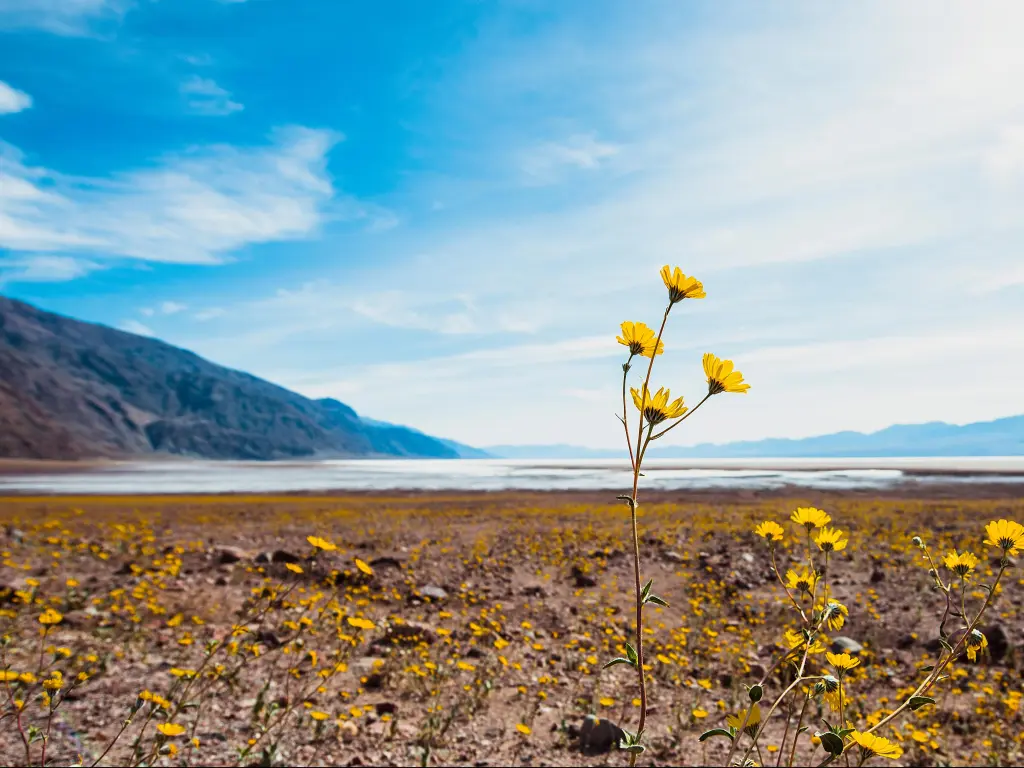
What kind of flowers will you see on this trip:
- Eureka Dunes evening primrose
- Poppies
- Parachute plant
- Desert five spot
- Desert gold
- Desert star
- Blazing star
- Mimulus
- Encelia
- Grape soda lupine
- Verbena
- Phacelia
How to get there: From San Francisco, drive across the Bay Bridge then merge onto Interstate 880 South then change onto Interstate 580 East after a few miles.
Right before you reach Manteca, take Interstate 5 South to Bakersfield. Once there, take CA Routes 58 and 14 to US Route 395 North. Turn onto CA Route 190 East which will take you to the entrance of Death Valley.
Our highlights: Badwater Basin in Death Valley is where some of those iconic pictures of the parched valley floor carpeted with yellow flowers during the 2016 superbloom were taken.
While not every season will be as dramatic as that one, this basin is more colorful than usual every spring and is a truly a sight to behold.
Another place to look for happy pockets of color in the desert is along Scotty's Castle Road. While the unique colonial revival ranch and former vacation property of a Chicago industrialist is still undergoing restoration from a 2021 fire, this area is as good as any other to drive and walk among the flowers.
If you come later in the Spring, in early May, then focus on exploring some of the higher elevations in the park in order to see the most wildflowers. Jubilee Pass and the Mosaic Canyon Trail are two very different places to get a feel for Death Valley and see some flowers along the way.
Local gems: Bordering Death Valley is a collection of unique and uncanny landscapes, few more so than Surprise Canyon Wilderness. Here you can hike along a spring-fed creek which winds through the otherwise desolate canyon, providing a refuge for countless species of wildlife, trees, and rare flowers like the Panamint daisy.
Our travel tips: Keep in mind that not every year is a superbloom in Death Valley. This precarious environment needs a lot of rain at the right time, usually from an early winter El Niño event, in order to be so prodigious with its blossoms.
Still, every year there are bound to be some wildflowers along the roads and trails and there is slightly cooler weather that makes hiking here more manageable.
That said, no matter when you come, bring plenty of water, snacks, and a first aid kit – this is a very remote, and very, large national park.
For up-to-date information about wildflower viewing in Death Valley National Park, you can visit the official NPS website.
When is the best time to visit: In the lower elevations of Death Valley the peak of the bloom season usually occurs from February to April. As you go further and further up into the mountains, the peak bloom happens later and later, with the highest elevations (up to 11,000 feet) coming into bloom from May to mid-July.

